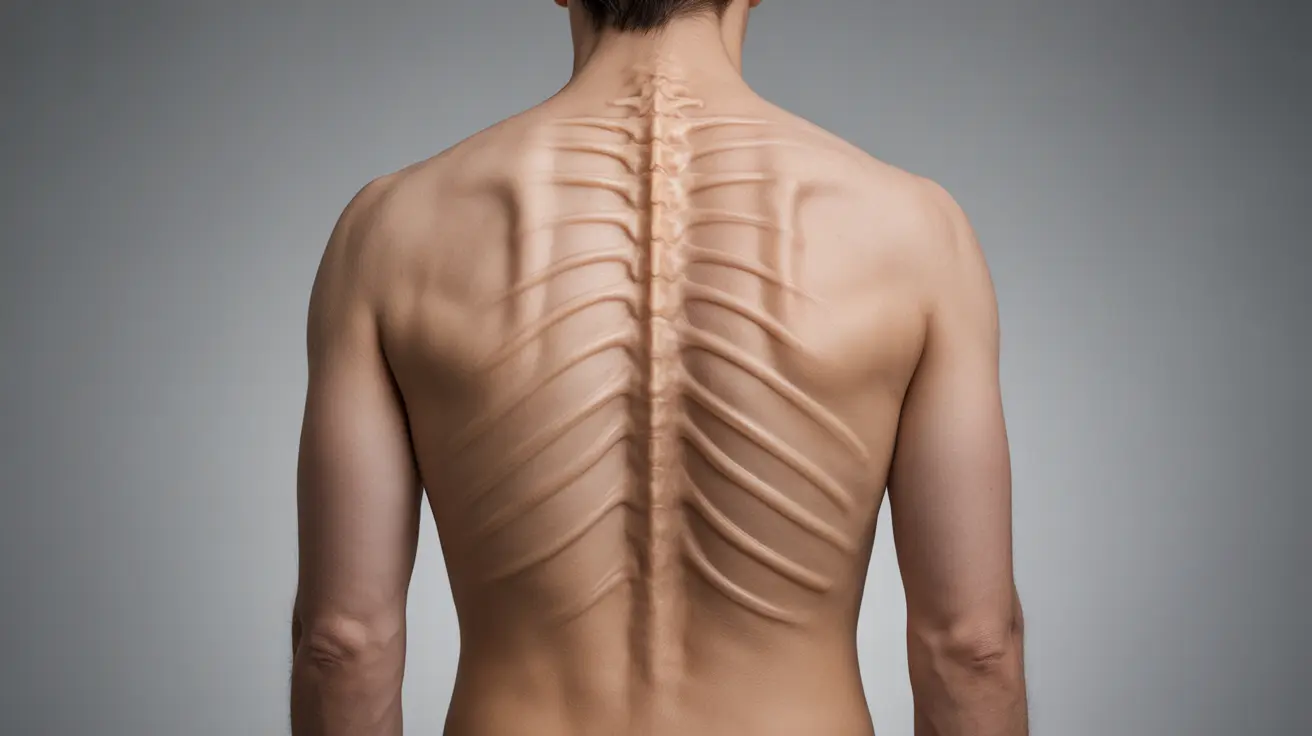Rib flare, also known as a rib hump, is a common condition that affects many people with scoliosis. This structural change occurs when the spine's irregular curvature causes the ribcage to rotate, creating a visible prominence on one side of the back. Understanding this condition is crucial for proper diagnosis and treatment planning.
For individuals with scoliosis and their families, recognizing the signs of rib flare and knowing the available treatment options can make a significant difference in managing this condition effectively. Let's explore the causes, symptoms, and various treatment approaches available.
Understanding Rib Flare in Scoliosis
When scoliosis develops, the spine doesn't just curve sideways – it also rotates. This rotation pulls the attached ribs along with it, causing one side of the ribcage to protrude more than the other. The resulting rib flare becomes more noticeable when the person bends forward, a position commonly used during screening examinations.
Causes and Risk Factors
The primary cause of rib flare is the three-dimensional nature of scoliotic curves. Several factors can influence its development:
- Curve severity and location
- Age of onset
- Rate of progression
- Type of scoliosis (idiopathic, congenital, or neuromuscular)
Signs and Symptoms
Identifying rib flare early is essential for proper treatment. Common signs include:
- Visible asymmetry in the back when bending forward
- Uneven shoulder heights
- Clothing fitting differently on one side
- Potential discomfort or pain in severe cases
Diagnosis Methods
Healthcare providers use several techniques to evaluate rib flare:
- Forward bend test (Adams test)
- Scoliometer measurements
- X-rays or imaging studies
- Physical examination
Non-Surgical Treatment Options
Many non-surgical approaches can help manage rib flare:
- Physical therapy and specific exercises
- Bracing
- Schroth method therapy
- Postural awareness training
- Core strengthening exercises
Surgical Intervention
In severe cases, surgical treatment might be recommended. The decision typically depends on:
- Curve progression
- Age of the patient
- Severity of the rib prominence
- Impact on breathing and daily activities
Managing Daily Life with Rib Flare
Living with rib flare requires certain adaptations and considerations:
- Regular monitoring of the condition
- Maintaining good posture
- Following prescribed exercise routines
- Wearing appropriate clothing and support garments
Frequently Asked Questions
What causes rib flare or rib hump in people with scoliosis?
Rib flare occurs when the rotational component of scoliosis causes the ribcage to twist, resulting in prominence on one side. This rotation is directly related to the spine's curved position and the way it affects the attached ribs.
How can rib flare from scoliosis be diagnosed and what symptoms should I look for?
Diagnosis typically involves a physical examination, including the Adams forward bend test, and may require imaging studies. Key symptoms include visible asymmetry in the back, uneven shoulders, and clothes fitting differently on one side.
What are the most effective non-surgical treatments to reduce a rib hump caused by scoliosis?
The most effective non-surgical treatments include specialized physical therapy, bracing, the Schroth method, and specific exercises designed to address the three-dimensional aspect of the curve. These approaches work best when started early and followed consistently.
When is surgery recommended for treating rib flare and scoliosis, and what does it involve?
Surgery is typically recommended when the curve is severe (usually over 45-50 degrees), rapidly progressing, or causing significant physical limitations or breathing problems. The procedure usually involves spinal fusion with instrumentation to correct both the curve and associated rib prominence.
Can rib flare from scoliosis lead to breathing problems or other complications if left untreated?
Yes, severe rib flare can potentially impact lung function and breathing capacity, especially in cases of significant spinal curvature. Other complications may include chronic pain, reduced mobility, and psychological impacts related to body image concerns.




